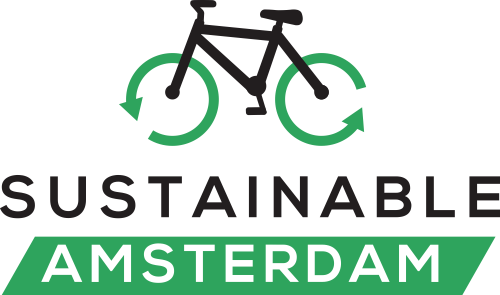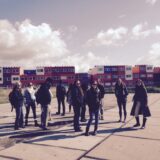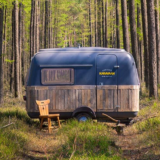Transformations to Sustainability on the Waterfront

Not too long ago, waterfronts were the thriving industrial hubs and ports on the backs of which cities developed and communities thrived. Industrial decline transformed these areas into polluted and unsafe sites that are often avoided or ignored.
Now many cities are rediscovering their waterfronts as ideal locations for post-industrial urban living, but transforming these brownfield areas into cosmopolitan spaces poses significant technical and institutional challenges.
In August, Sustainable Amsterdam hosted two public tours on the theme of “Transformations to Sustainability” where we explored some of the exciting developments that are making Amsterdam’s waterfront more sustainable and livable.
Both tours started at Oosterdokseiland with a discussion of how a mono-functional modernist postal distribution center made way for one of the most iconic redevelopments in the city. The new area has been redesigned to mix living, working, hospitality and cultural functions. The development makes use of high quality materials while an innovative district heating and cooling system for the area reduces CO2 emissions by approximatly 50% compared to conventional designs.
Nearby we discussed how a “sketchy” area behind the train tracks became one of the trendiest places in town. This is the site of Hanneke’s Boom, an “up-cycled” café that shows how successful places can emerge in the most unexpected places when young entrepreneurs are allowed to put out a few tables and sell drinks. We discussed current plans for opening and greening the area further, and the neighbours’ opposition to municipal plans for upgrading car accessibility.



On one of the tours we crossed the Ij River to the NDSM Werf in North, a hotspot for urban transformations. Once Europe’s largest shipbuilding yard, the area is now a hotbed for the creative industries. Plans to demolish old structures have been reconsidered, and new designs are now more mindful of old uses. We finished off at De Ceuvel: the clean-tech playground that has become synonymous with urban transformation for sustainability. Old houseboats have been converted into self-sufficient work studios which produce their own energy, clean their own gray water and compost their own sewage. On this sunny afternoon we joined the Kimchi Festival and appreciated all the sustainable food and drinks it had to offer.

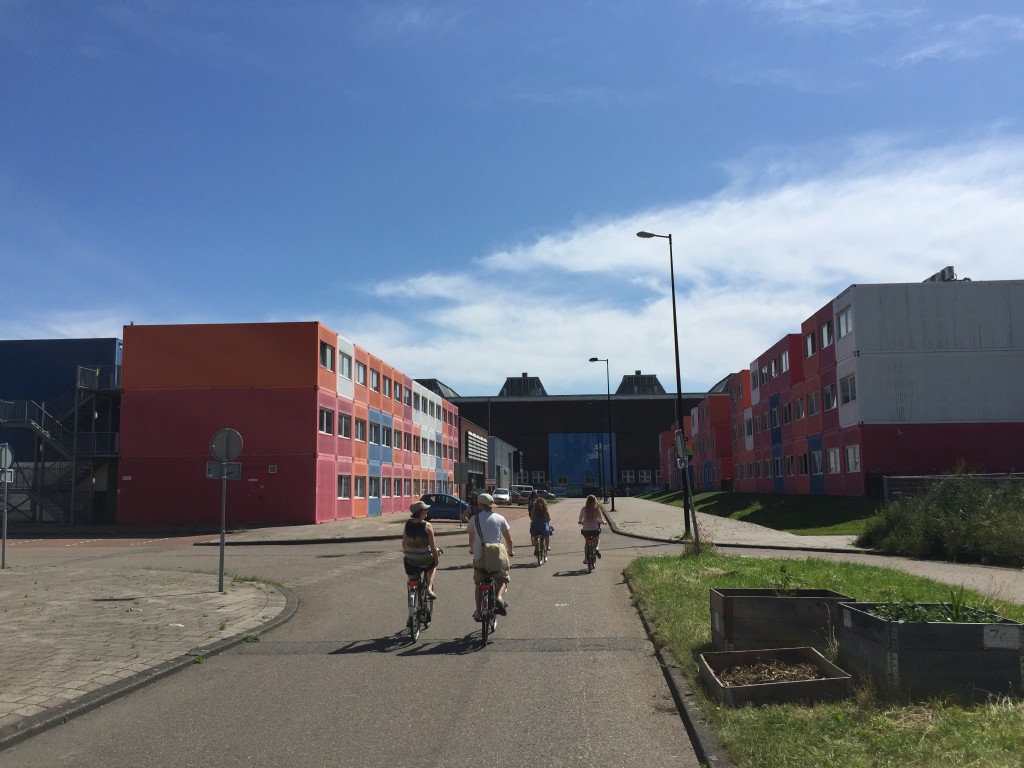
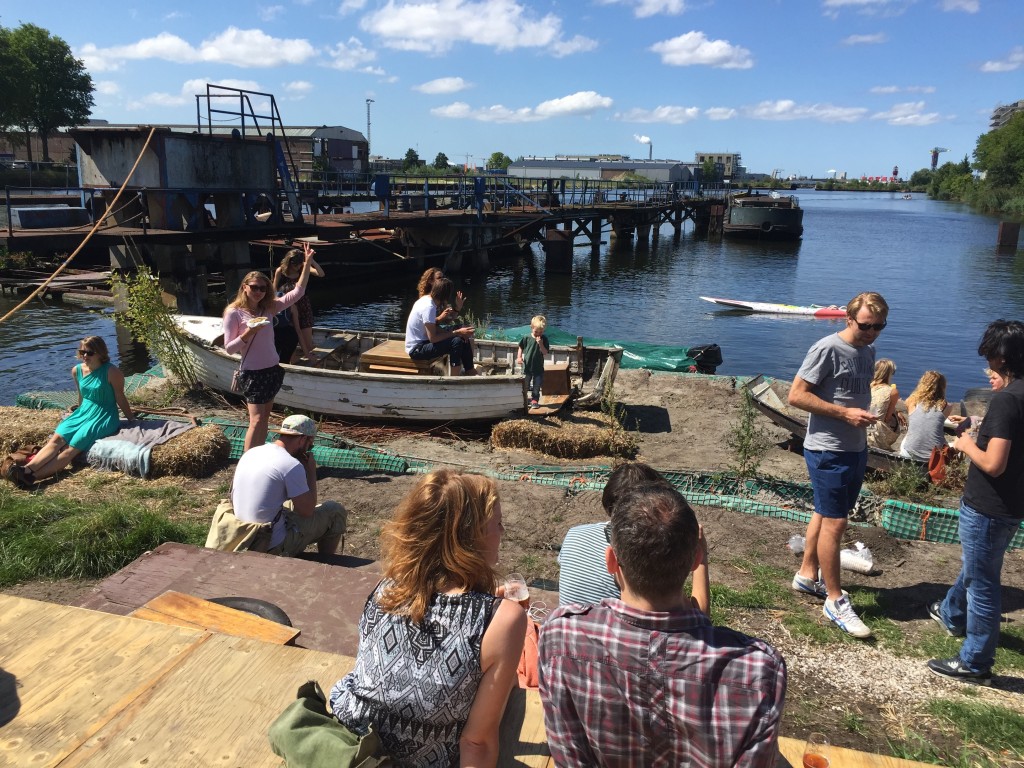
On the other tour we explored the Eastern Docklands, a brownfield redevelopment program that turned Amsterdam’s old harbour and industrial areas into unique residential neighbourhoods. Java-eiland stood out for the unique architecture and semi-public gardens. At KNSM we heard from a resident about the role of young social groups and squatters in transforming the area. We were invited to visit an atelier where people continue to build their boats, carrying on a long tradition on the island that was once the headquarters of the Royal Dutch Steamboat Shipping company (Koninklijke Nederlandse Stoomboot-Maatschappij, or KNSM ). The twin islands of Borneo and Sporenburg impress in the way they achieved a high density of development (100 dwellings per hectare) while providing mostly single-family housing. Families that used to leave Amsterdam for more suburban developments are now enticed back to the city where they can live in single family homes featuring ground-floor access, personal garages and private gardens – getting the best of suburban life in an urban and cosmopolitan setting.


Check out our schedule for similar public tours or email cornelia@sustainableamsterdam.com to schedule a private tour for your company or organization.
